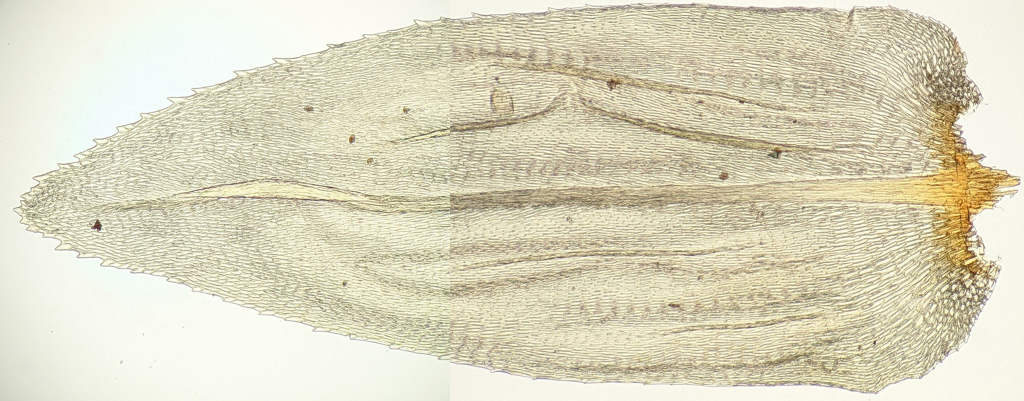Climaciaceae
Dioicous. Asexual propagules absent. Tufts or cushions on wet soil. Stems differentiated into creeping primary and erect secondary stems; primary stems subterranean, red-brown, covered with rhizoids; secondary stems erect, differentiated into an unbranched stipe section and above this a branched frond section, with branches arising along the main stem and potentially radiating in all directions from main stem, red-brown or brown, with few (not in Victoria) or dense rhizoids along stems and branches, with lamellae on branches, sometimes extending to leaf and costa bases (not in Victoria); branches mostly simple, rarely pinnate; paraphyllia and pseudoparaphyllia absent; central strand present. Leaves arranged around stem and facing all directions, often scale-like at base of erect stem, otherwise all leaves similar, appressed to erect-spreading when moist, little altered when dry; apex acute to obtuse and apiculate; costae single, subpercurrent; margins nearly entire to serrate toward apex, plane or recurved, without a border; laminal cells rhomboidal, fusiform, vermicular or linear, smooth; alar cells clearly differentiated, some hyaline and inflated. Pleurocarpous. Capsules erect or horizontal (not in Victoria), straight or curved (not in Victoria), exserted, operculate. Calyptra cucullate, smooth, glabrous. Operculum conic (not in Victoria) or rostrate from conic base. Persistome double and alternate; exostome of 16 entire teeth; endostome segments 16, well-developed, as long as teeth; cilia absent or rudimentary.
Two genera and four species throughout temperate regions of the northern hemisphere with one species disjunct in Australia and New Zealand; one genus and species in Victoria.
A distinctive moss family defined by a combination of the tree-like (‘dendroid’) branching habit, with branches radiating in many directions, stems clothed in rhizoids, and ovate leaves with smooth elongate laminal cells, a subpercurrent costa and clearly differentiated inflated and hyaline alar cells (Norris & Ignatov 2000). Climacium is often referred to as having filamentous paraphyllia along the stems, however, these structures are more accurately interpreted as rhizoids (Norris & Ignatov 2000). The northern temperate Pleuroziopsis ruthenica (Weinmann) Kindberg ex E.Brittton was segregated from Climaciaceae as its own family primarily based on the supposedly unique stem lamellae that extend to leaf and costa bases (Ireland 1968). This rendered the Climaciaceae a monotypic family. Similar structures have since been reported in some Climacium dendroides (Hedw.) F.Weber & D.Mohr (Norris & Ignatov 2000). Norris & Ignatov (2000) recommended that Pleuroziopsis be returned to Climaciaceae based on this finding. Inclusion of these genera in the same family is not in conflict with phylogenies of chloroplast, mitochondrial and nuclear DNA sequences that show these genera to be each other’s closest relative (Huttunen et al. 2012).
 Spinning
SpinningHuttunen, S. et al. (2012). Disentangling knots of rapid evolution: origin and diversification of the moss order Hypnales. Journal of Bryology 34: 187–211.
Ireland, R.R. (1968). Pleuroziopsidaceae, a new family of mosses. Journal of the Hattori Botanical Laboratory 31: 59–64.
Norris, D.H.; Ignatov, M.S. (2000). Observations on stem surface anatomy in Climacium and Pleuroziopsis (Climaciaceae: Musci). *Arctoa * 9: 151–154.



